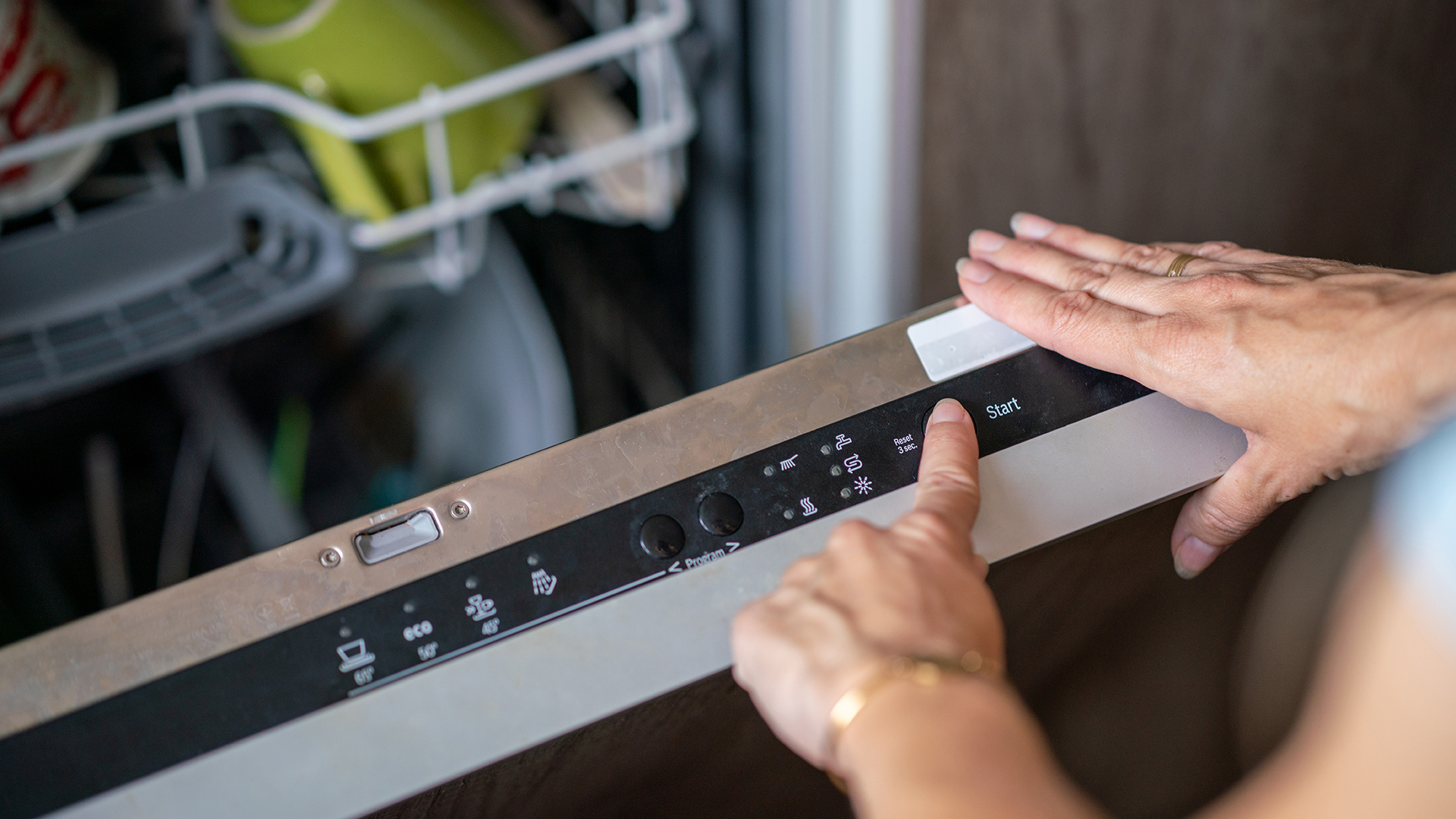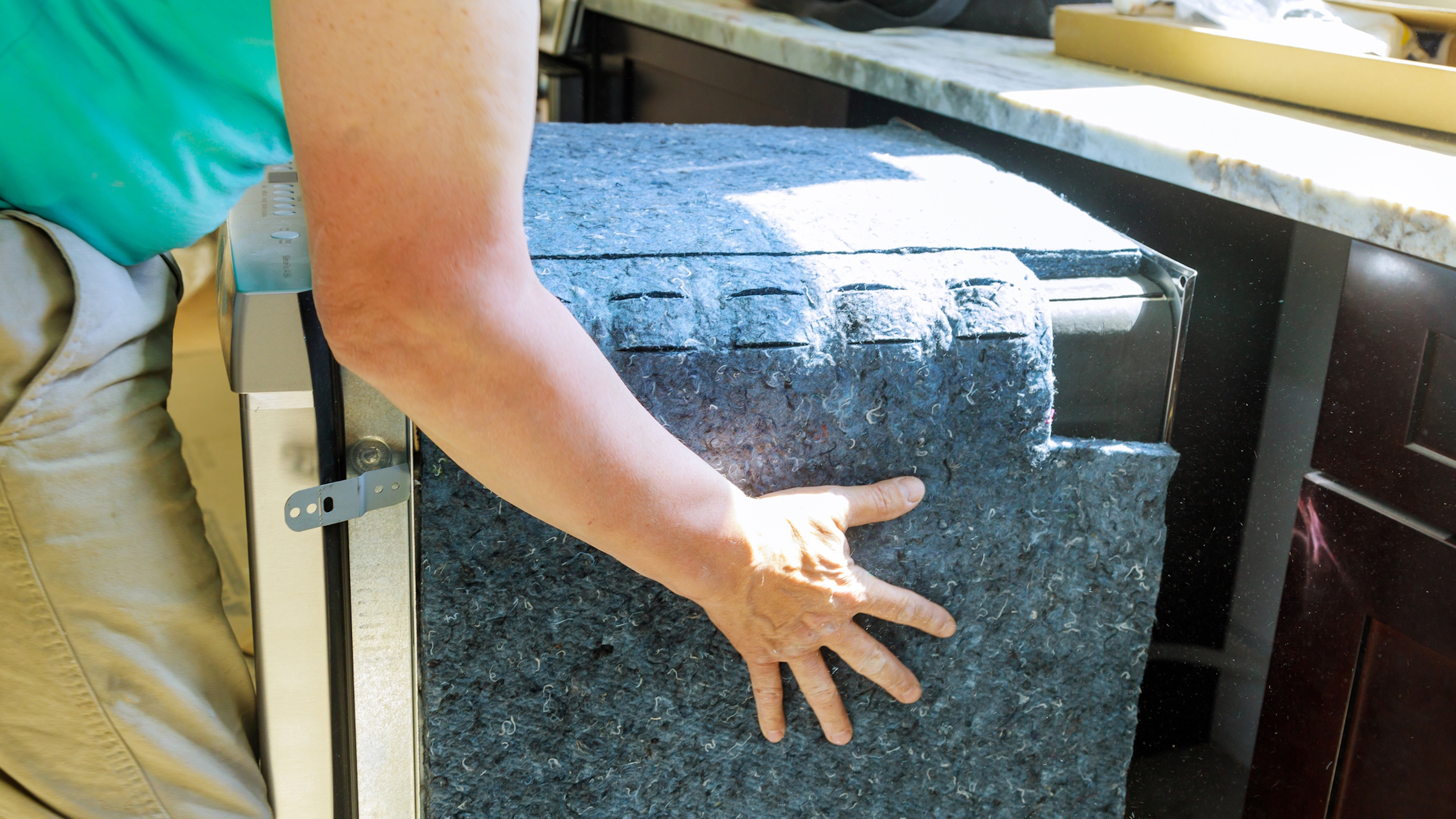How to install a dishwasher: save money by doing it yourself
Installing a dishwasher is a relatively straightforward process with the right tools and instructions.

Measuring tool
Screwdriver
Adjustable wrench
Electrical cord
Dishwasher connection kit
If you just bought one of the best dishwashers, you might be surprised to learn that they are relatively easy to install, which means you could save money.
Getting your new appliance up and running takes just a little time and some basic tools. If you do it yourself, you can do it whenever it's convenient for you. If you have the right kit, modern dishwashers are easy to connect, so you don't need to be a DIY king.
Keep reading to learn how to install a dishwasher, from measuring up to running tests once you're done.
How to install a dishwasher: step-by-step guide
1. Measure up
First things first – do you have space for your new appliance? Dishwashers tend to be standard, so if you’re replacing the old with the new, there’s a good chance you’ll be fine – but it is definitely worth checking. Nothing is more frustrating than choosing the perfect new appliance and finding it won’t fit in the space.
In addition to measuring the width, depth, and height of the space where your new dishwasher will be positioned, measure any doorways or narrow corridors your dishwasher will need to pass through so that it doesn’t end up unable to fit through the door.
Every model can be slightly different, so check your instruction leaflet for information about your new appliance before starting.
After removing your old dishwasher, start by checking that you have the right tools available to install your new one. You will need screwdrivers, an adjustable wrench, an electrical cord, and a dishwasher connection kit. You can get a kit from any hardware store, but check that the one you’re buying contains the correct options for your existing fittings. Check your existing fittings and measure them if necessary first. Turn off the water shut-off valve under the sink, just in case. Turn the power off at the fuse box, as well.
2. Remove the access panel

Your dishwasher should have an access panel at the front so that you can easily access the connections. If you don’t fancy lying face down on the floor, you’ll probably find it easier to spread some old towels on the floor and gently lower the dishwasher onto its back. Remove the access panel, and you should see the water inlet solenoid valve, the electrical connection unit, and the drain connection.
3. Wire up the electrics
Start by wiring the electrics – you must consult your handbook first as models differ. You should already have a cable in place from your old dishwasher – check it for damage in case it needs replacing. Simply push the loose end of the electric cable through the opening in the connection unit, match the colored wires to connections of the same color, and tighten the screws.
4. Connect the '90' joint

Your connection kit should contain an elbow joint called a ‘dishwasher 90’ (because it bends at 90 degrees). Screw it onto the water valve with your fingers until you can’t turn it any further, then use the wrench to give it an extra quarter-turn (don’t force it too far). Take the braided steel pipe from the kit and thread the coupling nut onto the 90 joint. Again, finger-tighten it, then finish with the wrench, careful not to overdo it.
5. Sort water and drainage tubes
Turn the dishwasher upright again, then push it back into position, not damaging any pipes in the process. As soon as you have enough play on the pipes, feed the water and drainage tubes through the hole at the side of the cabinet. Line the appliance up with the cabinet's center and use the adjustable legs to even it up (your handbook will tell you how to do this if it is not obvious). Finish pushing it back into position.

6. Finish up
Once you’re completely happy with where your appliance is positioned, you can fix it into place using the mounting tabs, which need to be screwed to the top of the new dishwasher. Screw the anchor brackets to the underside of the countertop, then fix the tabs to the plates.
Attach the unconnected end of the braided steel water pipe to the water supply shut-off valve under the sink. Turn the valve back on and check both pipe ends for leaks. If you spot anything, the fittings need to be tighter.
To prevent dirty water from flowing back down the drainpipe and contaminating your dishes, dishwashers must either have the drain pipe looped up high or have an air gap as a fail-safe. Before you reuse the same method as your old dishwater, it’s worth checking your local building and plumbing codes to see if anything has changed.
To use the ‘high loop’ method, bend the drain hose and secure it to the countertops underneath with a strong loop of wire or string. Connect the free end to the garbage disposal if you have one or the sink drain tailpiece if you do not.
Not all areas allow this method, so you may need to fit an air gap that prevents the build-up of pressure needed for dirty water to siphon back into the system.
7. Test it out
Once you are happy with your work, turn the power and water back on and run the dishwasher through an empty cycle to test it and make sure there’s no water anywhere it’s not supposed to be! Once everything looks good, you can put the access plate back in place and are ready to go.
For tips on how to make the most of your appliance, read our feature on how to load a dishwasher (properly).
How to install a dishwasher: FAQs
Do you need a plumber to fit a dishwasher?
Whether you need a plumber to install a dishwasher depends largely on your existing kitchen setup and your comfort level with plumbing tasks. Dishwashers aren't too hard to install, and most people with basic DIY skills can do it. But sometimes, you'd be better off hiring a professional.
If you already have the plumbing connections in place, like a water supply line, a drain line, and an electrical outlet, you might be able to install the dishwasher yourself. Most dishwashers come with detailed installation instructions, and there are many online resources and guides to help you.
Sign up to receive the latest news, reviews, buying guides and deals direct to your inbox
If your kitchen doesn't have these connections or if you're installing a dishwasher for the first time, you may have to hire a plumber. Installing correctly and safely prevents water damage or issues down the road.
If you want a reliable and efficient installation without the hassle of doing it yourself, a plumber can also be a good choice. Plumbers can give you peace of mind that the dishwasher will be installed right, even if they're more expensive.
What plumbing is required for a dishwasher?
You need to make a few plumbing connections to ensure your dishwasher runs efficiently and safely.
Water Supply Line: Under the kitchen sink, you need a water supply line for a dishwasher. It's usually 3/8-inch flexible copper or braided stainless steel. Ensure the valve is compatible with the dishwasher's inlet valve since this line delivers hot water to the dishwasher. To get the best cleaning, dishwashers usually need hot water, usually around 120 degrees Fahrenheit.
Drain Line: Usually, a flexible hose connects to the sink's drain or garbage disposal unit to remove wastewater from the dishwasher. This setup prevents contamination and ensures efficient drainage, so create a high loop with the drain hose or use an air gap to prevent wastewater from siphoning back into the dishwasher.
Electrical Connection: Although it's not strictly plumbing, having an electrical connection to the dishwasher is crucial. This usually involves a direct hardwired connection or a grounded plug-in power cord. The electrical circuit must handle the dishwasher's power requirements, usually around 15-20 amps.
Shutoff Valve: A shutoff valve should be installed on the water supply line for easy maintenance and emergency shutoffs. This valve is usually under the kitchen sink.
Does a dishwasher use the same plumbing as a washing machine?
Washing machines and dishwashers serve different purposes and are usually installed in different areas of the home. While both require water supply and drainage, their plumbing setups differ.
The details vary, but both appliances need water. Dishwashers typically use hot water to clean and sanitize dishes, so they connect to a hot water line. A flexible 3/8-inch water line is usually used to make this connection under the sink.
In contrast, washing machines usually have hot and cold water connections, so they can fill with either temperature as needed for different wash cycles. Connections like this usually happen in laundry rooms with larger hoses 1/2-inch or 3/4-inch in diameter.
These appliances also have different drainage systems. Dishwashers usually have their drain hoses connected to the sink's drain or a garbage disposal unit, which may require an air gap or high loop to prevent backflow.
Meanwhile, washing machines drain into a standpipe or into a sink. As washing machines discharge a lot of water during each cycle, the standpipe or sink in the laundry area must handle a lot of water quickly.
The plumbing configurations for dishwashers and washing machines aren't interchangeable because each appliance needs its own plumbing setup to work properly and safely. They're typically installed in kitchens.
Are all dishwashers the same size?
The size of dishwashers varies, but most models follow standard dimensions to fit into cabinetry. Knowing the variations in dishwasher sizes is crucial when designing a kitchen layout or replacing an existing dishwasher.
The most common dishwasher size is the standard built-in model, which typically measures about 24 inches wide, 24 inches deep, and 35 inches high. Standard dishwashers usually have a capacity of 12 to 16 place settings, which is fine for average-sized households. This size fits under standard kitchen countertops and accommodates most cabinetry configurations.
Compact dishwashers are great for small kitchens or apartments. They are usually 18 inches wide and have a smaller capacity, usually 8 to 10 place settings. Those who don't have much space but still want a dishwasher can use compact dishwashers.
Those who can't fit a built-in dishwasher can use portable dishwashers. They're usually the same size as regular dishwashers but have wheels and a hose you can connect to your kitchen faucet. Smaller countertop dishwashers are even smaller, usually 22 inches wide and 17 inches high, sitting on a counter. They're perfect for small families or people.
Some standard-width dishwashers have a tall tub design, which allows for more interior space and greater flexibility when loading dishes.
Sara is an experienced magazine journalist and commercial copywriter. Writing helpful home-related content for Top Ten Reviews, Sara splits her time between the UK and France, alongside her Springer Spaniel.

